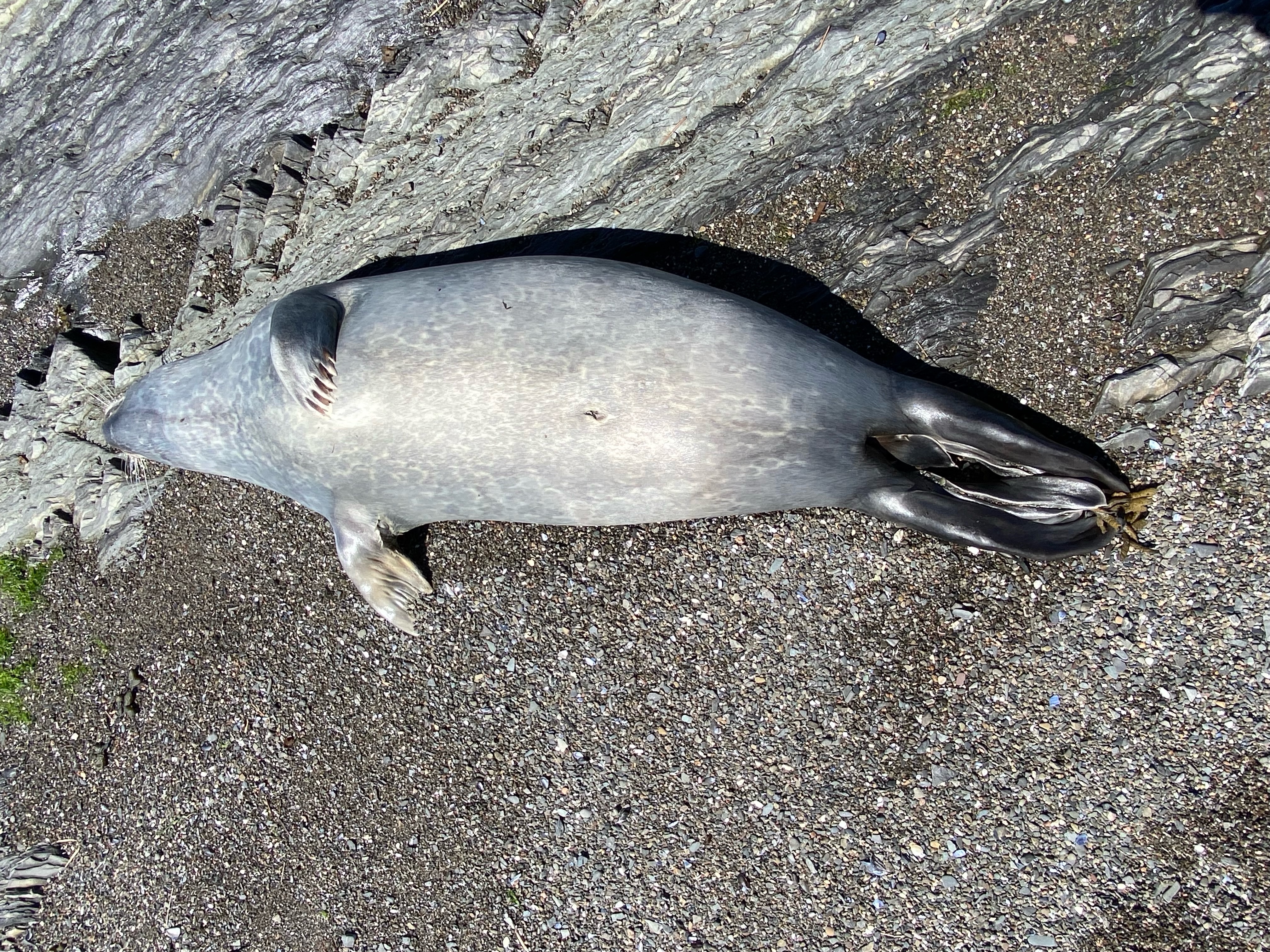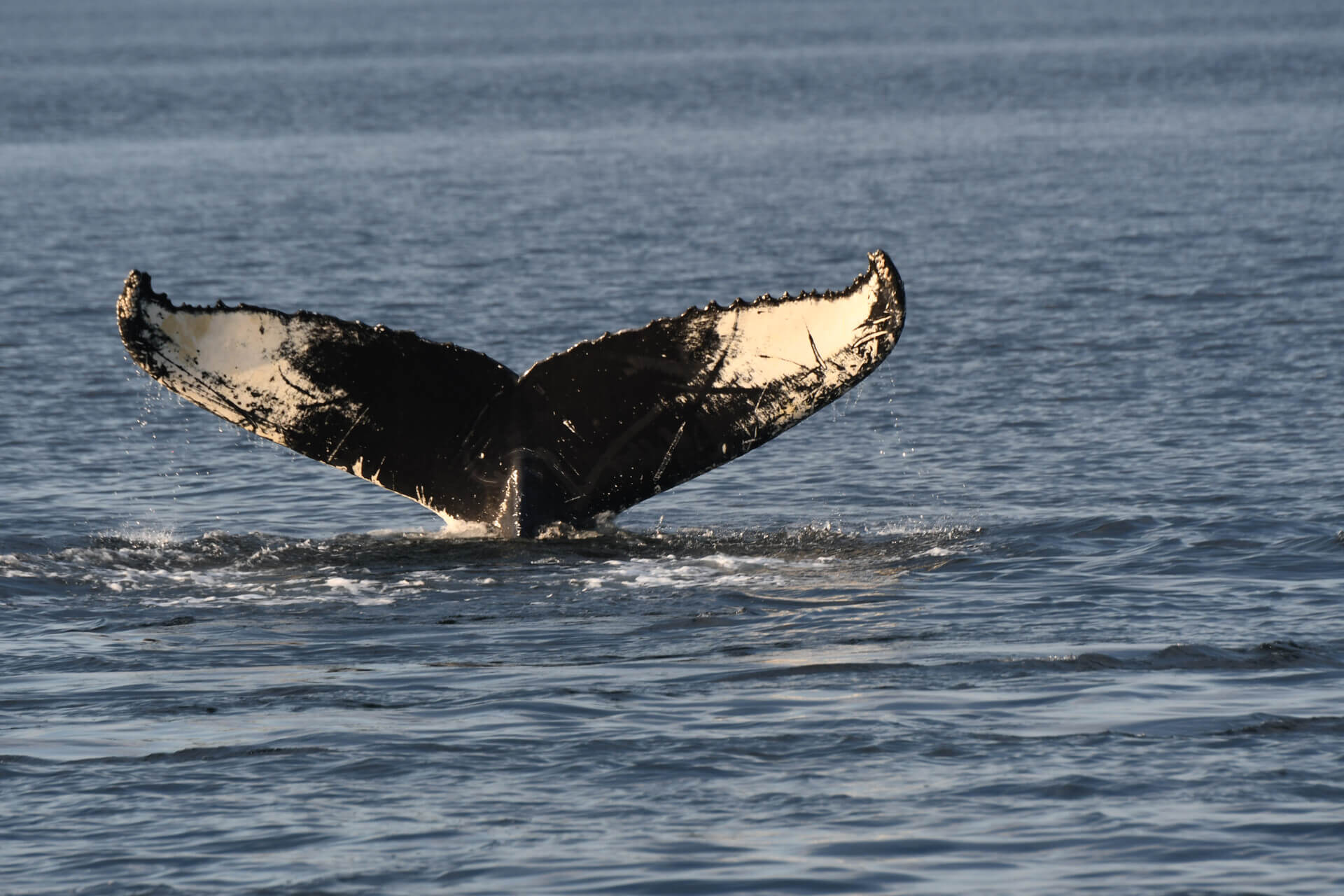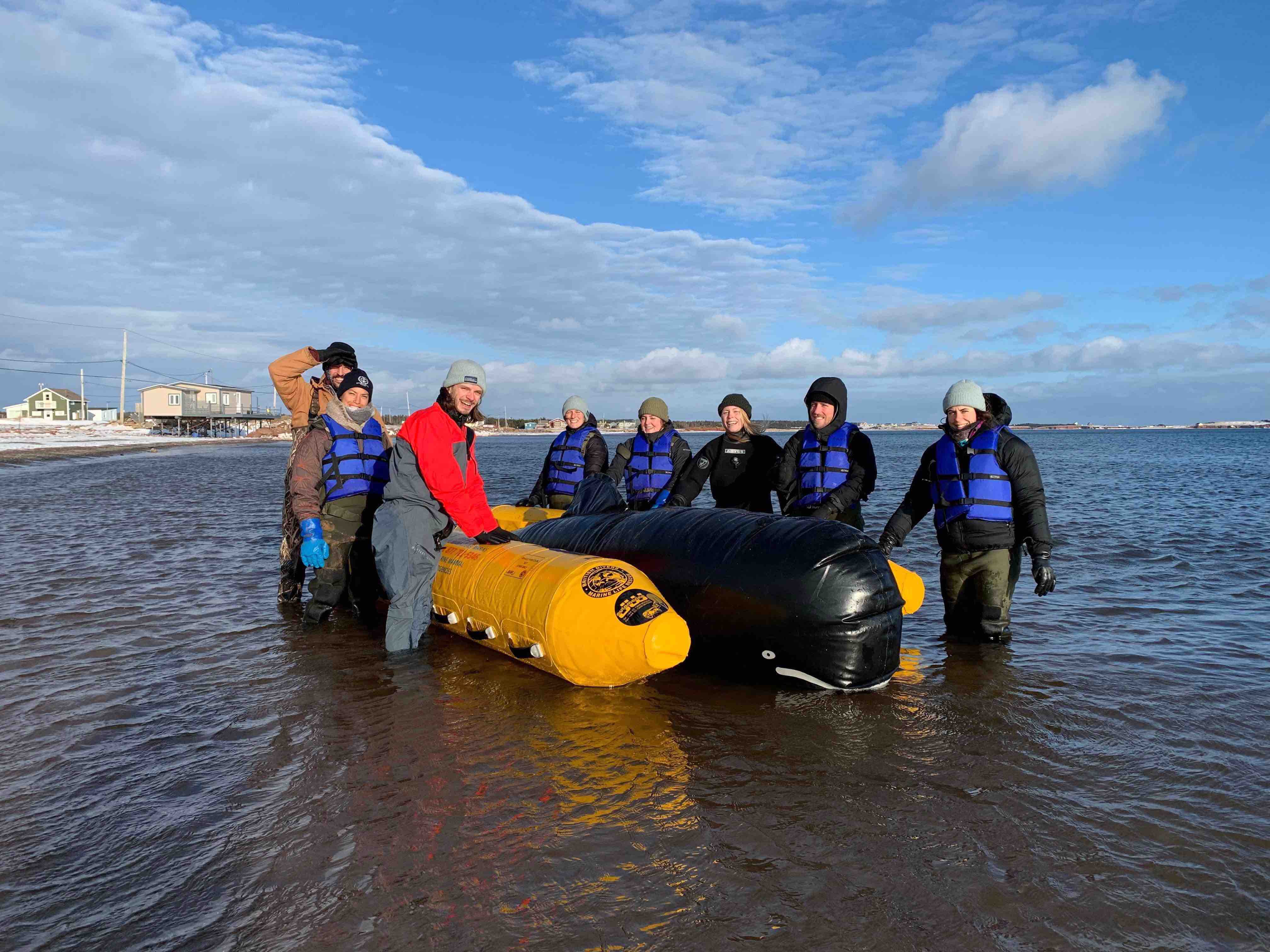Last June, the Quebec Marine Mammal Emergency Response Network (QMMERN) received an abnormally high number of reports of dead or sick seals. Subsequent analyses have revealed the presence of the bird flu virus in harbour seals, a disease that has been rapidly spreading in wild bird populations across the country since the beginning of the year.
Alarming figures
What caught the attention of the scientific community? The QMMERN has identified 93 harbour seal carcasses since the beginning of the year, which is 6 times more than an average year and 3 times more than the record year. In June alone, 65 carcasses were reported. Avian flu was quickly suspected of playing a role in this uptick in mortality. The QMMERN recovered and sampled 15 carcasses for analysis by the Centre québécois sur la santé des animaux sauvages (Quebec wildlife health centre). The results show that 11 of the 15 harbour seals sampled were infected with the Eurasian strain of avian influenza H5N1 (HPAI). This is a highly pathogenic strain that is easily transmitted from one animal to another and causes severe illness. For now, only harbour seals seem to be getting infected with the virus and the spread in Quebec is limited to the Bas-Saint-Laurent region.
Avian flu: just for the birds?
The name of this strain can be confusing! In Canada, the disease affects species such as gannets, Canada and snow geese, common eiders, gulls, turkey vultures, corvids [Translator’s note: ravens, crows and jays], bald eagles and several species of domesticated birds. However, it is known that this particular strain of flu can be transmitted from birds to mammals. In the U.S., the National Oceanic and Atmospheric Administration (NOAA) has also confirmed the presence of this virus in beached seals in Maine. In North America, H5N1 is also believed to have infected other mammal species, notably raccoons, otters, lynx, red fox, skunks and two humans.
Experts do not know exactly how the virus made the leap from birds to harbour seals. The proximity of the two species at haulouts may have favoured close contact between them and exposed the seals to the bodily fluids and feces of infected birds. It is not yet known for sure whether the virus can be transmitted from one seal to another.
Avian flu on a global scale
Is bird flu a pandemic? This disease, which is currently rampant in Canada, is also found in other countries in North America, Europe, Asia and Africa. It is believed to have been present for about 2 years. Can it be considered a pandemic? In humans, when an infectious disease is limited to a given region, it is called an epidemic. If it spreads beyond the borders of a given country and affects a continent or the entire world, it becomes a pandemic. Different terms are used when referring to other animal species: epizootic is equivalent to an epidemic and panzootic is equivalent to a pandemic. In our case, we would therefore be dealing with a panzootic!
What is bird flu?
To understand bird flu, one needs to be familiar with the virus that causes it. There are four types of influenza virus: A, B, C and D. These distinct types have the ability to cause infections in different species and with varying severity. Type B viruses generally only affect humans and can cause epidemics, but not pandemics. Type C viruses infect mostly humans, but occasionally dogs or pigs as well. They cause mild symptoms and are not associated with epidemics. Type D viruses are only found in cattle. Bird flu, or avian influenza, is caused by different subtypes of the Type A influenza virus. Viruses of this type have the ability to infect a number of different species including birds, mink, pigs, dogs, horses, wild boar, whales, seals, humans and many others.
Different strains of Type A viruses can cause avian flu, including H7N1, H9N2, H5N1 and H7N9. The strain currently causing the avian flu pandemic (which is also affecting seals) is H5N1.
As veterinarian Stéphane Lair of Université de Montréal explains, “Although the risks of transmission of this flu virus to humans and pets appear to be low, it is recommended not to approach, and especially not to touch, a sick or dead seal. It is also important to keep one’s pets away from dead seals or birds.”
The arrival of summer offers a glimmer of hope since the spread of this virus seems to subside in the hottest months.







